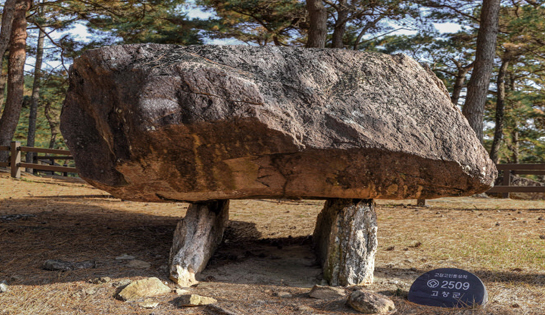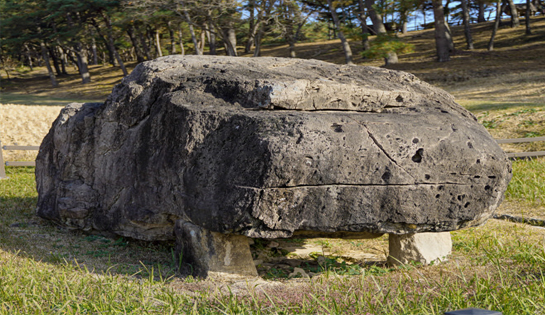Dolmen and the Bronze Age


Dolmen and the Bronze Age
 Gunjang Bau (Rock)
Gunjang Bau (Rock) Toad Bau (Rock)
Toad Bau (Rock)The stone prop is the Korean word for a Dolmen
The stone prop is the Korean word for a Dolmen, and is divided into Bae-bau, Turtle-bau, and Toad-bau according to its shape.
Most of the Dolmens are prehistoric tombs in which a tomb was placed on the ground or underground and a large stone was placed on top of such tomb. Dolmen (Goindol) is a stone that is exposed on the ground by storing stones under a flat flagstone or a lump of stone, which is the Korean word for Dolmen, which means a stone that has been stored. In the private sector, Dolmens are called Dokbaegi, Baubaegi, and Dokbau because natural stones are buried in the ground, and in the case of foundation-type Dolmens with pedestal stones, they are called Golbau, shed-bau, and following the shape of the cover stone, they are called Baebau, turtle-bau, and toad-bau. , and is called a frog bau. Also, in connection with folk beliefs, it is also called Chilseong bau in the arrangement of Dolmens, and Janggun bau, which is said to have been stopped by an old general while moving stones. The village names are also called Juam (Bae rock), Guam (Gwiam, Turtle Rock), Chilam (Chilseong rock), and Jiseok (Sored stone, Stone prop) in relation to Dolmens.